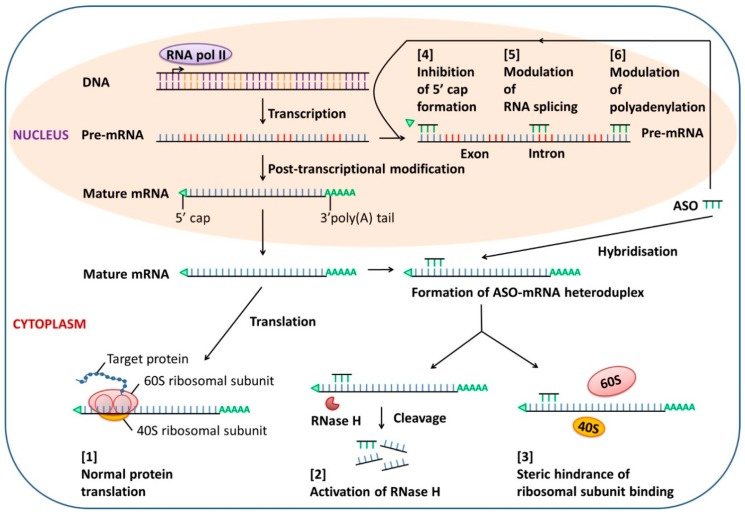Figure 1.
Mechanisms of action of antisense oligonucleotide (ASO). In the absence of ASO, normal gene transcription and protein translation are maintained [1]. ASO can enter cells by endocytosis and hybridize with target mRNA in the cytoplasm. Formation of an ASO-mRNA heteroduplex activates RNase H, leading to the degradation of target mRNA [2], or interferes with ribosomal assembly by steric hindrance, resulting in inhibition of translation [3]. Both actions will knock down the target protein. In addition, the binding of ASO to the target pre-mRNA in the nucleus can regulate mRNA maturation through [4] inhibition of 5′ cap formation, [5] modulation of RNA splicing, and [6] blockade of polyadenylation.

